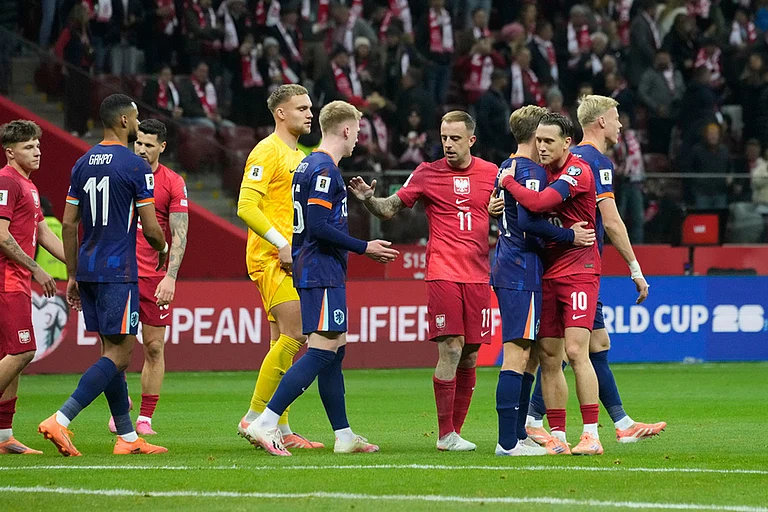Prof. Dr Jerzy Lis speaks of a shared future vision burgeoning into a partnership between AGH University of Krakow and Guru Gobind Singh Indraprastha University (GGSIPU) in New Delhi, between Małopolska and India in conversation with Aditi Chakraborty.
Q. AGH University has long been a leader in science, technology, and innovation. How would you describe its core strengths and philosophy?
Founded in 1913, AGH University stands as one of Central Europe’s most respected centres of science and technology. AGH has evolved into a hub of innovation that bridges the legacy of Europe’s industrial past with the emerging digital future. Our philosophy rests on building bridges between disciplines, nations, and most importantly, technology and society.
We see knowledge not as something to be confined to laboratories but as a force that shapes the public, industry, and governance. For us, technology transfer is not only about innovation — it is about civilisational exchange. Our goal is to create a balanced ecosystem where academic excellence meets societal responsibility.
Q. The global higher education landscape has evolved rapidly. How do you view this transformation?
We live in dynamic times, where stability has become an illusion. The only way forward is adaptability. Universities must embrace a multidisciplinary approach, blending engineering, data science, environmental studies, and social sciences to prepare students for real-world challenges.
What distinguishes world-class universities today is not their size or wealth, but their ability to integrate innovation with empathy, to remain sensitive to global and local contexts while producing knowledge that serves humanity.
Q. AGH combines deep-rooted traditions with futuristic research. How do you balance legacy with innovation?
Our identity was forged over a hundred years ago through excellence in mining, metallurgy, and heavy industrial applications, but today it extends into information technology, artificial intelligence, and renewable energy. We are proud of our legacy, but tradition must never be static. We integrate our historical strengths with emerging domains like AI, climate technology, green engineering, and space sciences.
Education must evolve beyond theoretical instruction into skill-orientated, problem-solving frameworks. This is where I see a shared philosophy with GGSIPU—both institutions value hands-on learning and industry relevance, preparing graduates for the realities of the contemporary job market. The universities of the future must be borderless, interdisciplinary, and human-centric. Bureaucracies must give way to collaborative ecosystems.
Q. Critical minerals and energy transition are key global themes. How can India and Central Europe collaborate in this area?
Central and Eastern Europe are rich in critical minerals and industrial expertise. India, with its expanding renewable energy and electric mobility sectors, can be a strategic partner in developing sustainable supply chains and green industrial technologies.
At AGH, we have even established a space programme in collaboration with ISRO, NASA, and ESA—from “underground to sky”, as I like to say. Such initiatives reflect how technology and sustainability can converge beyond boundaries.

Q. In today’s geopolitical flux, how do you perceive the Indo–European partnership with respect to your collaboration with GGSIPU?
The world is moving through rapid realignments, but I believe India and Europe share a common destiny in knowledge creation and sustainable growth. Cooperation in science, energy, and technology is not just strategic; it is moral and developmental. Our partnership must be built on mutual learning, combining Europe’s legacy in industrial research with India’s dynamism, youth, and digital leadership.
Through the partnership between AGH University and GGSIPU, we have realised that there is an enormous scope for collaboration between India and Poland. We are studying models for joint degree programmes and collaborative research centres in India. Rather than merely establishing a branch campus, we prefer co-created innovation hubs — where Indian and Polish students, researchers, and startups can work together on applied challenges in energy, digital systems, and climate resilience. We have identified three primary goals:
First, through our joint diploma and staff training programmes, followed by university-level research collaborations, we hope to create a high-level knowledge exchange platform.
Second, through the establishment of contact centres connecting Krakow and Delhi, we endeavour to link industry, academia, and business ecosystems, with the plan of hosting a Poland–India Conference next year on business, finance, and technology.
Third, by building a strong India–Europe bridge, leveraging Poland’s role within the European Union to create pathways for Indian students, researchers, and startups and vice versa.
Q. Krakow’s Małopolska region and Delhi share ambitions as innovation hubs. Do you see specific areas for collaboration?
Absolutely. Both regions are knowledge-driven and entrepreneurial. I see strong potential in smart city design, circular economy initiatives, and startup ecosystems. We plan to establish international partnership centres at both AGH and GGSIPU to facilitate student and faculty exchanges and industry partnerships. These centres will act as living laboratories for urban innovation and sustainable entrepreneurship.
Our first step will focus on management studies, followed by mechanical engineering, biotechnology, materials science, and biomedical technology. We are exploring joint research, exchange programmes, and technology transfer mechanisms. Government support, both in India and Poland, will be crucial in scaling these efforts. It’s a value-based partnership—one built not just on institutional agreements, but on trust and shared purpose.
Institutions like AGH and GGSIPU can show the world that education is not only about careers—it’s about preparing young minds for a complex, interconnected world, guided by values, curiosity, and courage.


























